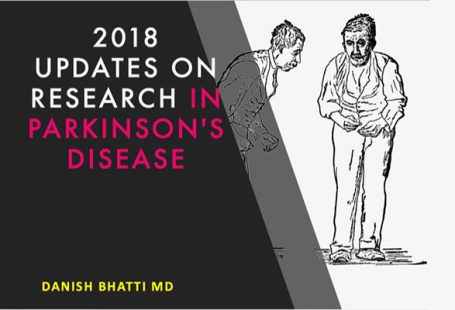
ABSTRACT
 Introduction: Parkinson’s disease (PD) is increasing in prevalence due to a growing elderly population. Although there is no cure, there are exercise therapies and medications for mild to moderate disease. For more advanced disease, infusion or surgical interventions including deep brain stimulation surgery, levodopa carbidopa intestinal gel, and subcutaneous apomorphine infusion are considered. As these interventions become increasingly available, it is imperative for a neurologist involved in the care of advanced PD to be aware of the indications and timing for these interventions.
Introduction: Parkinson’s disease (PD) is increasing in prevalence due to a growing elderly population. Although there is no cure, there are exercise therapies and medications for mild to moderate disease. For more advanced disease, infusion or surgical interventions including deep brain stimulation surgery, levodopa carbidopa intestinal gel, and subcutaneous apomorphine infusion are considered. As these interventions become increasingly available, it is imperative for a neurologist involved in the care of advanced PD to be aware of the indications and timing for these interventions.
Areas covered: This article attempts to identify different patient profiles and matches them with suggested advanced therapies for PD. There is limited literature providing guidance to a busy neurologist to match the most appropriate advanced therapy to the right patient profile. This article attempts to fill that void.
Expert commentary: When matching patient profiles to therapy, several features must be considered: age, frailty, cognitive status, phenotype (predominant tremor vs. akinetic rigid), side effect or complication profile (dyskinesia, hallucinations, dysautonomia), and patient’s comfort with invasive therapy options.
Additional information
An overview of selection process for advanced therapies to offer to patients with Parkinson Disease.
What is it about?
Patients with advanced Parkinson Disease sometimes requires therapies which are invasive and surgical. However the process of selection of various advanced therapies is difficult and complex. This overview tries to provide some basis on selection process in comparative way between these advanced therapies including their pros and cons and an algorithmic approach is provided with over simplification.
Why is it important?
Patients with advanced Parkinson Disease sometimes requires therapies which are invasive and surgical. However the process of selection of various advanced therapies is difficult and complex.
For more detail and purchase full article please visit:
https://www.tandfonline.com/doi/abs/10.1080/14737175.2018.1535902?journalCode




